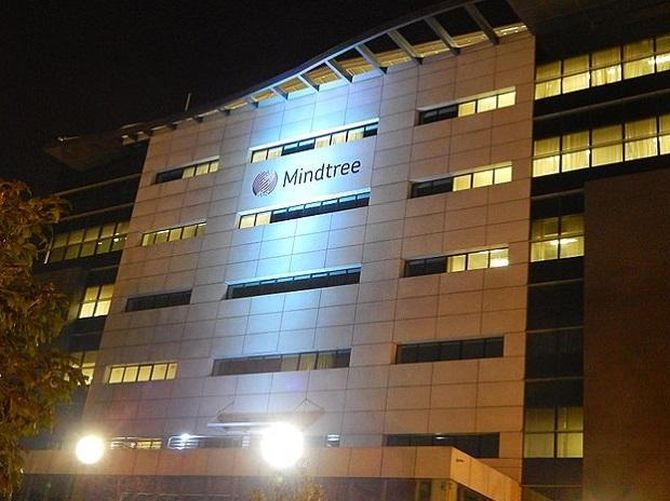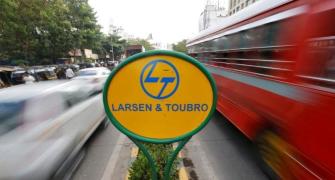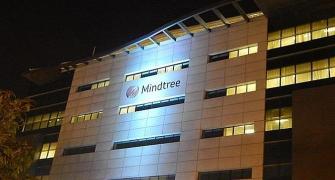Acquisitions are done to synergise with existing offerings of firms; to strengthen or enter new areas, platforms or geography; find new customers for its products; keep parts of the acquired organisation, perhaps the digital in the case of Mindtree, and to sell others to increase its own value.
Never is it to grow the acquired organisation more than itself, says Pankaj Chandra.

From raag Malkauns to Guernica, from the splendor of moon-landing to the first gush of water in Aswan dam - all have been constructed to evoke a sense of uniqueness, unusual human achievement, and beauty that heighten our inner sensibilities.
Organisations are somewhat like that - lifeblood for many, saviour for others, but above all termed beautiful or ugly based on how they conduct themselves and evoke the inner sensibilities of employees, customers and shareholders.
As a former independent director of Mindtree, the value of the beauty of its organisational culture, which is in the eye of the beholder, is not amiss.
Organisations, like musicians, become the persona of the raag that they are singing.
Manufacturing has its own beauty, its own sound of music on the shop-floor but is very different from that of an airport or a retail store selling only designer perfume.
So are the mindsets, hearts of people, and characteristics of organisations that inhabit the deep corners of their different customer organisations.
It helps them deliver accurately. That makes Mindtree and L&T fundamentally very different.
One is amazed as to how can such a capable organisation like L&T not see this dichotomy.
Its argument is that Mindtree could be kept as a separate entity.
Wanting to keep Mindtree separate is an implicit recognition of Mindtree’s cultural uniqueness and a prayer to the winds of time by L&T.
Innovative organisations safeguard matchless cultures, instead.
Acquisitions are done to synergise with existing offerings of firms; to strengthen or enter new areas, platforms or geography; find new customers for its products; keep parts of the acquired organisation, perhaps the digital in the case of Mindtree, and to sell others to increase its own value.
Never is it to grow the acquired organisation more than itself - well sometimes it does happen when one wants to shed one’s own organisational cloak and take on the persona of the other!
Most organisations that have been forcefully acquired in the last few decades - be it Mannesmann or RJR Nabisco or AOL etc, don’t exist anymore. So why would Mindtree?
One salient by-product of unique cultures is that they allow you to build unique capabilities.
Mindtree gave India the Aadhaar engine and unique intellectual property-driven solutions like Bluetooth stacks.
The list is long. And therefore, the outcomes from organisations in the same sector are dissimilar despite having similar strategies.
Mindtree has regularly won customers against better equipped, larger organisations because of its leadership’s complementary perspective like the coming together of blue, black and white to make Guernica (where else would you find all founders sitting as one in a single, relatively small, open office), its culture of seamless invigoration, and its can-do attitude.
The value of curiosity, courage and responsibility is ingrained in the culture from the day a young graduate enters Mindtree Kalinga, Mindtree’s Global Learning Centre that takes pioneering immersive learning to the next level.
All this allowed for introspection, transparency and innovation and hence building of a fearless environment.
That you had to care for the other - whether your customer’s customer or your team member - was a natural outcome of this competitive yet empathetic culture.
L&T should study this and ensure that this culture jives with its own. Else, this is a disaster in making for all.
The loss of Mindtree would be a loss for the Indian IT industry for sure.
It could mean the end of an institution especially when the leadership and the organisation do not want it.
Innovation is generally the first casualty in such situations.
Such acquisitions lead to changing of the board and the leadership team including driving down the acquirer’s vision.
The big question would be who stays as most capabilities in service organisations lie in people and their processes.
And will customers move if key characteristics of the delivery organisation - especially its cultural capacity - changes?
One has not talked about the operations aspects of such an acquisition that will require aligning of Mindtree systems, processes, client delivery, billing, travel norms, HR practices, financial representation etc to L&T’s way of functioning.
The best-case scenario is that it would take four to five years for such an acquisition to become somewhat integrated.
Who has patience in these days to listen to Rashid Khan’ s soul touching alap khayal, Tu hai malik mera, in raag Malkauns?
The Mindtree story is closely tied with the role of V G Siddhartha, its largest single shareholder in the past, who patiently supported the culture and the pathways chosen by Mindtree.
But a mystery remains: then why did he not sell back his shares to Mindtree or other friendly investors?
What were the compulsions? Only he would know. And that makes L&T’s attempt to take over even more difficult for Mindtree to accept.
At the end, it is about choosing a way of life.
Pankaj Chandra is vice-chancellor of Ahmedabad University and former director of Indian Institute of Management Bangalore. Views are personal.
Photograph: Courtesy, Business Standard










